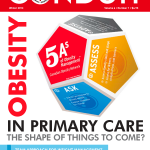Sleep Restriction Leads To Less Fat-Loss
 Regular readers will be well aware of the increasing data supporting the importance of adequate restorative sleep on metabolism and weight management.
Regular readers will be well aware of the increasing data supporting the importance of adequate restorative sleep on metabolism and weight management.
Now, a study by Wang Xuewen and colleagues, published in SLEEP, shows just how detrimental sleep deprivation can be during a weight-loss diet.
Their study included thirty-six 35-55 years oldadults with overweight or obesity, who were randomized to an 8-week caloric restriction (CR) regimen alone (n=15) or combined with sleep restriction (CR+SR) (n=21). All participants were instructed to restrict daily calorie intake to 95% of their measured resting metabolic rate. Participants in the CR+SR group were also instructed to reduce time in bed on 5 nights and to sleep ad libitum on the other 2 nights each week.
The CR+SR group reduced sleep by about 60 minutes per day during sleep restriction days, and increased sleep by 60 minutes per day during ad libitum sleep days, resulting in a sleep reduction of about 170 minutes per week.Although both groups lost a similar amount of weight during the study ~3 Kg). However, the proportion of total mass lost as fat was significantly greater in the CR group (80% vs. 16%).
In line with this substantial difference in fat reduction, resting respiratory quotient was significantly reduced only in the CR group.
Importantly, these effects of sleep deprivation on fat loss were observed despite the fact that subjects were allowed to sleep as much as they wanted on the non-restricted days. This suggests that the negative effects of sleep deprivation during weight loss are not made up by “make-up” sleep.
Although overall, the amount of weight lost in this study is modest, it clearly fits with the notion that adequate sleep (in this case, during weight loss), can be an important part of weight management.
Clearly, the role of sleep in energy homeostasis will remain an interesting field of research, as we continue learning more about how sleep (or rather lack of it) affects metabolism.
@DrSharma
Edmonton, AB
New Accredited Online Case Studies in Obesity Management For Health Professionals
 This week, the Canadian Obesity Network in partnership with mdBriefCase has launched a series of online learning modules for health professionals. This is part of the Network’s ongoing international initiative to create accredited learning resources on obesity management in primary and is closely aligned with the 5As of Obesity Management which are now available in Canada, Brazil, Italy, Denmark, Germany, Finland and Norway.
This week, the Canadian Obesity Network in partnership with mdBriefCase has launched a series of online learning modules for health professionals. This is part of the Network’s ongoing international initiative to create accredited learning resources on obesity management in primary and is closely aligned with the 5As of Obesity Management which are now available in Canada, Brazil, Italy, Denmark, Germany, Finland and Norway.
These modules are available for free using the links below. (If you don’t already have an account, you will be asked to register but registration is free!)
An Ounce of Prevention: Medical Management of Obesity-Related Comorbidity
Meet Marion. Marion is 28 years of age, and has been struggling with her weight. Marion’s main concern about her weight has to do with her appearance and how she is received socially.
Canadian Physician Module CLICK HERE
Canadian Allied Health Module CLICK HERE
Halting Obesity Progression
Meet Robert. Robert is 19 years of age and has struggled with being overweight since childhood. He has a family history of diabetes on both sides. Robert recently lost 10kg, but was unable to sustain the weight loss.
Canadian Physician Module CLICK HERE
Canadian Allied Health Module CLICK HERE
Sleep Debt in Adult Obesity in Brazil: A Critical Factor Often Overlooked
Obesity is associated with many forms of sleep disruption due to a variety of causes including, for example, body pain, disrupted circadian rhythms, depression or snoring and other breathing-related sleep problems.
Brazilian healthcare practitioners – CLICK HERE
All other international healthcare practitioners – CLICK HERE
@DrSharma
Edmonton, AB
Diagnosis and Treatment of Obstructive Sleep Apnea in Adults
 In follow up to yesterday’s guest post by Christy Turer on her challenges in getting timely diagnostics and treatment for a patient with severe obstructive sleep apnea (OSA), it appears timely that this week’s issue of the Canadian Medical Association Journal (CMAJ) features a full-length update on the diagnosis and treatment of OSA in adults.
In follow up to yesterday’s guest post by Christy Turer on her challenges in getting timely diagnostics and treatment for a patient with severe obstructive sleep apnea (OSA), it appears timely that this week’s issue of the Canadian Medical Association Journal (CMAJ) features a full-length update on the diagnosis and treatment of OSA in adults.
As Cheryl Laratta form the University of British Columbia and colleagues point out, OSA) is likely underdiagnosed in Canada with lack of appropriate treatment putting many at risk of poor quality of life, comorbidity, motor vehicle crashes and increased health care utilization.
Clinical features include daytime sleepiness, unrefreshing sleep or fatigue, frequent nocturnal waking due to choking or gasping, nocturia, morning headaches, poor concentration, irritability and erectile dysfunction. Bed partners may report snoring or witnessed apneas. Atypical symptoms, more frequently reported by women, include insomnia, impaired memory, mood disturbance, reflux and nocturnal enuresis.
However, as the authors point out, the correlation of symptoms with disease severity is poor, which is why it is important for physicians to be alert to milder symptoms and screen individuals who present with known risk factors like overweight/obesity, increased neck circumference and nasopharangeal crowding. Importantly, while the presence of these features increases pre-test probability, neither history nor physical examination are enough to rule out OSA.
A number of questionnaires (e.g. Berlin Questionnaire, STOP-Bang, etc.) are available to assist in screening patients.
As for diagnosis,
“The gold standard for diagnosis of OSA is attended polysomnography (level I study), which involves collection of seven or more data channels, including electroencephalogram and electrooculogram for sleep staging, electromyogram, electrocardiogram and respiratory channels.”
Less reliably,
“Level III sleep studies record a minimum of three channels of data while the patient sleeps at home. Level III studies usually monitor airflow, snoring, respiratory excursion, body position, heart rate and oxygen saturation, but some validated devices use surrogate measurements for these variables, such as tonometry or actigraphy, and the technology is constantly evolving.51 Level III studies do not record sleep; therefore, severity of OSA is estimated using the respiratory event index, which is the number of desaturation events per hour of total recording time.”
Treatment options include nightly use of a continuous positive airway pressure (CPAP) device or the use of oral devices (for less severe cases). The latter should be custom fitted by a dentist with extensive experience or additional training in dental sleep medicine.
Oddly enough, there is no mention of obesity treatment as an effective measure to manage OSA, given that there is evidence from both medical and surgical obesity treatment studies that document clinically important improvement in OSA with weight loss.
The article also briefly discusses on-going long-term patient management as well as some of the important research issues that remain to be studied regarding the rather complex pathophysiology of this common disorder.
In addition,
“Research into the models of service delivery for OSA, including strategies to improve timely access to care, funding for OSA treatment and patient preference, will be important to improve the care of Canadians with sleep disordered breathing.”
@DrSharma
Edmonton, AB
Urgent Need For Low-Cost In-Home Diagnostics For Obstructive Sleep Apnea

Christy Turer, MD, Assistant Professor of Pediatrics, Internal Medicine, and Clinical Sciences at University of Texas Southwestern (UTSW) Medical Center, Dallas, Texas, USA
Today’s guest post comes from Christy Turer, MD, Assistant Professor of Pediatrics, Internal Medicine, and Clinical Sciences at University of Texas Southwestern (UTSW) Medical Center, Dallas, Texas, USA.
This week, I saw a 50 year-old female patient with obesity (BMI 44) who desperately needs screening and treatment for obstructive sleep apnea (OSA).
Over the past four years, her heart function (ejection fraction) has declined from >60% to now ~20% with significant pulmonary hypertension, almost certainly related to undiagnosed, untreated OSA based on multiple nightly witnessed apneas.
Although she now sleeps with oxygen, this does nothing for her hypopnea-related, sympathetic overdrive-mediated, cardiac dysfunction.
Without CPAP treatment, her life expectancy is two years or less.
Unfortunately, within the public health system for which I work (county system that offers free or discounted healthcare to poor residents in a metropolitan city, USA), the average wait time for a sleep study is 1-2 years.
To be fair, this patient has had a previous attempt at a sleep study in a sleep lab a couple of years ago. At that time, however, the study was inconclusive, because she could not fall asleep in the sleep lab’s unfamiliar environment.
It is frustrating not being able to help my patients with suspected sleep apnea, especially, when I know that help could be available.
It is high time we had a technological disruption that enables cheap, reliable, in-home OSA assessment for patients.
Christy Turer, MD
Dallas, TX
Dr Turer is a standing member of the US Food and Drug Administration’s Pediatric Advisory Committee, a consultant to the FDA’s Endocrinologic/Metabolic Drugs Advisory Committee, and Past-Chair of the Obesity Society’s Clinical Management of Obesity Section. She has authored numerous scientific articles and lectured widely on primary-care evaluation and management of overweight/obesity and related metabolic comorbidities across the lifespan. Her comments do not reflect the views of UTSW, FDA, or any of her funding sources.
How Do People With Obesity Spend Their Time?
 We live in a time where most of us complain about the lack of it. Thus, I often remind myself that our “fast-food culture” is more a time than a food problem.
We live in a time where most of us complain about the lack of it. Thus, I often remind myself that our “fast-food culture” is more a time than a food problem.
Now a study by Viral Patel and colleagues, published in OBESITY, takes a detailed look at how US Americans spend their time according to different BMI categories.
The researchers analyse data from over 28,503 observations of individuals aged 22 to 70 from the American Time Use Survey, a continuous cross-sectional survey on time use in the USA.
In a statistical model that adjusted for various sociodemographic, geographic, and temporal characteristics, younger age; female sex; Asian race; higher levels of education; family income >$75 k; self-employment; and residence in the West or Northeast census regions were all associated with a lower BMI relative to reference categories whereas age 50 to 59 years; Black, Hispanic, or “other” race; and not being in the labor force were associated with a higher BMI.
That said, here are the differences in time use associated with higher BMI:
Although there were no substantial differences among BMI categories in time spent sleeping, overweight individuals experienced almost 20 fewer minutes of sleeplessness on weekends/holidays than individuals with normal weight. Furthermore, there was a U-shaped relationship between BMI and sleep duration such that BMI was lowest when sleep duration was approximately 8 h per day and increased as sleep duration became both shorter and longer. Less sleep on weekends and holidays (5 to 7 h) was also associated with higher BMI than 8 to 9 h or sleep.
There were also no major differences between BMI categories and the odds of participating in work or in the amount of time working. However, working 3-4 h on weekends/holidays was associated with the lowest BMI. Individuals with obesity were more likely to be working between 3:30 a.m. and 7:00 a.m. on weekdays than normal-BMI individuals, again perhaps cutting into restful sleep.
Individuals with obesity were less likely to participate in food and drink preparation than individuals with normal weight on weekdays but spent about the same amount of time eating or drinking as the reference category.
Interestingly, individuals with obesity were more likely than individuals with normal weight to participate in health-related self-care, and overweight individuals spent over 1 h more on weekdays than individuals with normal weight on health-related self-care and also spent an additional 15 min (almost double the time) on professional and personal care services.
While individuals with higher BMI were less likely to participate in sports, exercise, and recreation on weekdays and weekends/holidays compared with individuals with normal weight, those who did participate did not differ from individuals with normal weight in the amount of time spent participating. In contrast, overweight individuals were more likely to attend sports/recreation events during the week and spent an additional 47 min (almost 25% more) on this activity than individuals with normal weight.
Overall, there was a positive and generally linear association between time spent viewing television/movies and BMI, with individuals with obesity more likely to watch television almost all hours of the day during the week and weekends.
On weekends/holidays, individuals with obesity were more likely to participate in care for household children and household adults. It was also observed that individuals with obesity spent an additional 15 min on religious and spiritual activities on weekends/holidays, compared with normal-BMI individuals (who spent 116 min).
While these data are of interest and are largely consistent with the emerging data on the role of optimal sleep duration and the detrimental impact of sedentary activities like television viewing on body weight, we must remember that the data are cross-sectional in nature and cannot be interpreted to imply causality (as, unfortunately, the authors do throughout their discussion).
Also, no correction is made for increasing medical, mental, or functional limitations associated with increasing BMI levels, which may well substantially affect time use including sleep, work, participation in sports or work-related activities.
Thus, it is not exactly clear what lessons one can learn regarding possible interventions – it is one thing to describe behaviours – it is an entirely different thing to try and understand why those behaviours occur in the first place.
Thus, unfortunately, findings from these type of studies too often feed into the simplistic and stereotypical “obesity is a choice” narrative, which does little more than promote weight bias and discrimination.
@DrSharma
Edmonton, AB


